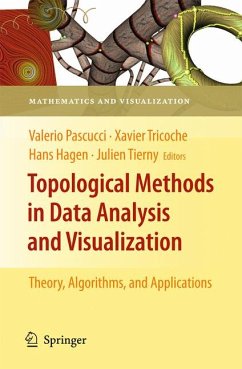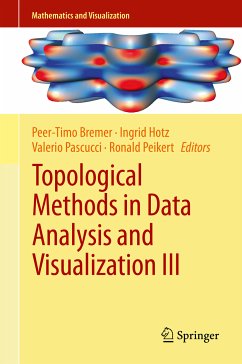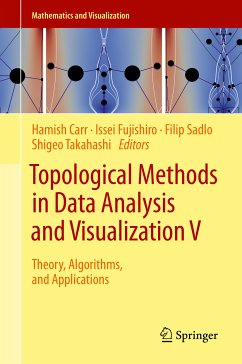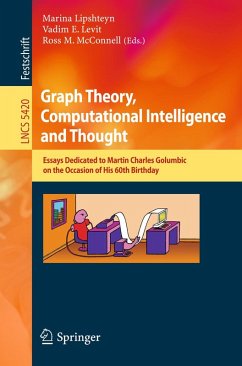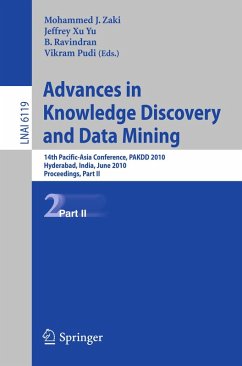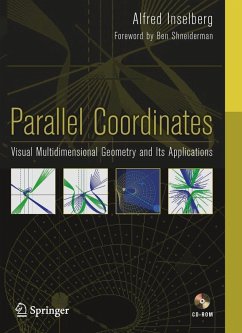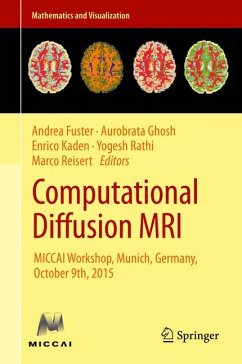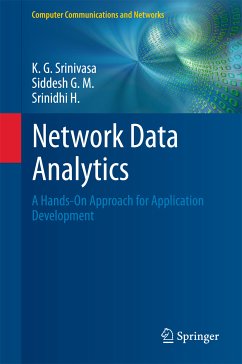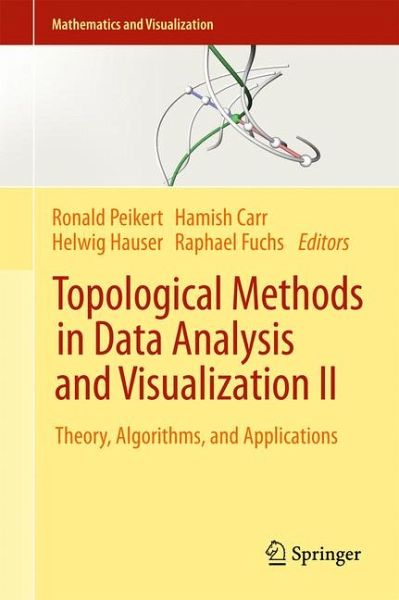
Topological Methods in Data Analysis and Visualization II (eBook, PDF)
Theory, Algorithms, and Applications
Redaktion: Peikert, Ronald; Fuchs, Raphael; Carr, Hamish; Hauser, Helwig

PAYBACK Punkte
52 °P sammeln!
When scientists analyze datasets in a search for underlying phenomena, patterns or causal factors, their first step is often an automatic or semi-automatic search for structures in the data. Of these feature-extraction methods, topological ones stand out due to their solid mathematical foundation. Topologically defined structures-as found in scalar, vector and tensor fields-have proven their merit in a wide range of scientific domains, and scientists have found them to be revealing in subjects such as physics, engineering, and medicine.Full of state-of-the-art research and contemporary hot top...
When scientists analyze datasets in a search for underlying phenomena, patterns or causal factors, their first step is often an automatic or semi-automatic search for structures in the data. Of these feature-extraction methods, topological ones stand out due to their solid mathematical foundation. Topologically defined structures-as found in scalar, vector and tensor fields-have proven their merit in a wide range of scientific domains, and scientists have found them to be revealing in subjects such as physics, engineering, and medicine.
Full of state-of-the-art research and contemporary hot topics in the subject, this volume is a selection of peer-reviewed papers originally presented at the fourth Workshop on Topology-Based Methods in Data Analysis and Visualization, TopoInVis 2011, held in Zurich, Switzerland. The workshop brought together many of the leading lights in the field for a mixture of formal presentations and discussion. One topic currently generating a great deal of interest, and explored in several chapters here, is the search for topological structures in time-dependent flows, and their relationship with Lagrangian coherent structures. Contributors also focus on discrete topologies of scalar and vector fields, and on persistence-based simplification, among other issues of note. The new research results included in this volume relate to all three key areas in data analysis-theory, algorithms and applications.
Full of state-of-the-art research and contemporary hot topics in the subject, this volume is a selection of peer-reviewed papers originally presented at the fourth Workshop on Topology-Based Methods in Data Analysis and Visualization, TopoInVis 2011, held in Zurich, Switzerland. The workshop brought together many of the leading lights in the field for a mixture of formal presentations and discussion. One topic currently generating a great deal of interest, and explored in several chapters here, is the search for topological structures in time-dependent flows, and their relationship with Lagrangian coherent structures. Contributors also focus on discrete topologies of scalar and vector fields, and on persistence-based simplification, among other issues of note. The new research results included in this volume relate to all three key areas in data analysis-theory, algorithms and applications.
Dieser Download kann aus rechtlichen Gründen nur mit Rechnungsadresse in A, B, BG, CY, CZ, D, DK, EW, E, FIN, F, GR, HR, H, IRL, I, LT, L, LR, M, NL, PL, P, R, S, SLO, SK ausgeliefert werden.




